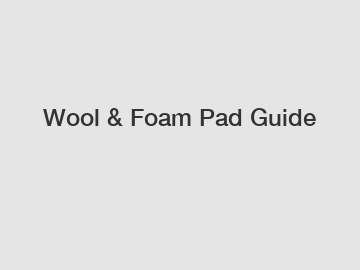What To Look for In a Custom Architectural Metal Fabrication
Aug. 26, 2024
What To Look for In a Custom Architectural Metal Fabrication
If you're involved in a construction or building restoration project, it's critical to find the right custom architectural metal fabrication partner to handle the metal components - especially for restorations. This could include features such as railings and light fixtures, as well as external decorative metal components.
If you are looking for more details, kindly visit our website.
Doing work that looks good and is fully up to local building codes is difficult, requiring a specific expertise which is rare even in the metal fabrication industry. A poor partner could ruin the look of a restoration job, or even install fixtures that fail to pass city inspection. Such projects could add considerable time and cost to a project and must be avoided.
What are the most important factors to consider when evaluating custom architectural metal fabrication companies? This is what you should look for.
Six Key Must-Haves in a Custom Metal Fabrication Partner
1 - Experience, experience, experience
More than anything else, you want a metal fabrication shop with years - or decades - of experience doing architectural work. This is not a field for newcomers. Proper architectural metal fabrication requires deep knowledge of the metals, fabrication techniques, expected stresses and usage, and more. These are not skills that come easily.
Any potential partner you evaluate should have an extensive portfolio of past work which includes projects that were at least as difficult as your current job. Also, don't discount longevity. Broadly speaking, the longer a metal shop has been in business, the more trustworthy they are likely to be.
2 - Access to high-quality materials
The quality of the metal that goes into your building always matters! Metals can have varying levels of impurity, and a great metal fabrication shop knows how to obtain high-purity materials that will be fully suitable for your purposes. This is particularly important in metal pieces that will be responsible for human safety, such as walkways and railings. You must know the work being done is safe for everyday use.
This also extends to the finishes they use, and their finishing techniques. Do they have the facilities for more difficult types of finishing, such as anodizing and electroplating? If not, they may not be able to provide the right look for your project, or properly protect outdoor elements from the weather.
3 - A focus on communication
Custom architectural metal fabrication revolves around meeting your needs and creating pieces that match the exact look you need. This means your metal fabrication partner must place a priority on customer communication, backed up by effective project management that keeps your desires at the top of the to-do list.
In addition, they will need to interface with other elements of your construction/renovation crew, necessitating strong coordination skills. Ideally, they utilize resource planning software that allows full team access to critical information, while ensuring materials and finished pieces are delivered on schedule.
Proper communication can go a long way in preventing costly mistakes or delays!
4 - Robust client-focused customization
Communication also plays a big part in ensuring the work is properly customized to your needs. The best custom metal fabrication shops utilize CAD design software to pre-visualize all design elements before committing, so you can comment on the designs in progress. Some shops have even begun incorporating 3D printing into their pre-vis workflow so that you can see and handle scale models of the work to be done.
You should be in the loop at all stages of the project and given ample opportunity to adjust designs so that they're perfect for your needs, before committing to the final end product fabrication.
5 - An excellent safety record
Safety is a serious consideration in metal fabrication work, in multiple ways. The pieces they produce must be fully up-to-code and, when appropriate, fully rated for daily usage. This can often be evaluated by looking at their ISO standards certifications. The more ISO standards a shop can meet, the more likely they are to produce solid work.
However, internal safety also matters. You want a metal shop that takes serious steps to protect their own workforce, and more than meets all relevant safety regulations. A shop that isn't concerned about the health and safety of their workers probably won't be that concerned about your safety either.
6 - Transparent pricing
Due to how exclusive this market is, it's relatively rare to find custom metal fabrication shops that play games with their pricing and billing... but you still have to watch out. As with most forms of contracting, you want a partner who produces highly detailed estimates and is willing to stand by their bid in most situations.
The earlier they can provide accurate pricing information, the better it is for you since it allows for precise budgeting on your project.
Heather & Little Are Your Experts for Custom Architectural Metal Fabrication
Since , we have been North America's top service providing custom architectural metal fabrication services, with a focus on building preservation and restoration. We've worked on beloved landmarks and historical properties across the continent. Our goal is always to properly preserve the look and feel of the property, while still adhering to all necessary modern building standards.
Contact us to begin consulting on your next project.
5 Factors for Choosing Sheet Metal Fabrication
5 Factors For Choosing Sheet Metal Fabrication
Written By: Tony Varela
Introduction:
One of the most adaptable building materials in the manufacturing industry, sheet metal has rightfully found its place as one of the most important materials in the industrial age. Steel, aluminum, brass, copper, tin, nickel, titanium, or other precious metals are traditionally used to make sheet metal. Thicknesses vary but are mostly broken into two distinctions; thin gauge and heavy plate. Many different industries rely on the versatility and durability of sheet metal including aerospace, appliance manufacturing, consumer electronics, industrial furniture, machinery, transportation and many more.
Why Choose Sheet Metal?
Sheet metal offers plenty of advantages as compared to both non-metal alternatives and other metal fabrication processes, as well. When compared to machining, sheet metal is much less expensive in both processing and material costs. It does not have the extremely high tooling costs of injection molding, which makes sense at high volumes.
As found in machining, rather than starting with an expensive block of material, much of which is wasted in the milling process of removing unneeded material, sheet metal lets you buy what you need and use what you need with relatively low material waste. The unused sheet can then be used for another project, while the shavings produced in machining, need to be discarded and recycled.
With the advancement of technology used in modern fabrication, automation and new CAD (computer aid design) programs make designing in sheet metal easier and easier. CAD programs now have the ability to design in the same material you intend to fabricate with and will allow programming of the parts to come straight from the CAD model itself. No longer is there a need to create a separate set of shop drawings to interpret the design. Perhaps most significant, in a world of mass production, sheet metal has the ability to scale rapidly. The greatest cost for sheet metal fabrication is in the first piece. This is because the cost is all in the setup. Once the setup is complete, and the costs are spread out across the larger volume of pieces being fabricated, the price drops significantly, greater so than most subtractive processes like machining.
1. How is Sheet Metal Being Used?
Sheet metal can be cut, stamped, formed, punched, sheared, bent, welded, rolled, riveted, drilled, tapped, machined. Hardware can then be inserted to fix electronic components, metal brackets or other pieces of sheet metal. To finish sheet metal, it can be brushed, plated, anodized, powder-coated, liquid painted, silkscreen, laser-etched, and pad printed. And of course, parts can be welded riveted into complex assemblies.
Just like any other technology, the processing of precision sheet metal is constantly evolving. Materials, processes, tooling, and equipment are becoming highly specialized which is improving the time involved to make common sheet metal parts and speeding up the design process as well. To fully leverage all the technological advantages, it is important that you select the right supplier and know the differentiation between metal fabricators; architectural sheet metal (HVAC and ductwork), heavy plate fabricators (staircases, fences, heavy structures) precision fabricators (thin gauge sheet metal, enclosures, brackets etc').
If you are looking for more details, kindly visit thingyfy.
Additional resources:Buyer's Guide to Bench Vises
Using Geogrid Biaxial is the Idol Method for Soil Stabilization
Why is Epoxy coated wire mesh Better?
A Complete Guide to uPVC Doors and Windows
Post-Tensioning Institute > Home
3 Things to Know About Epoxy-Coated Rebar
Hand Broom Cleaning Brushes-Soft Bristles Dusting ...
Along these lines, this white paper will explore key components of the precision sheet metal fabricator, precision sheet metal fabrication. This paper will focus on:
- Fabrication techniques
- Common Materials
- Design considerations
- Finishing options
2. Sheet Metal Fabrication Techniques
By definition, sheet metal starts out flat, but before this, it comes from large cast ingot and the rolled into a long ribbon in the desired thicknesses. These rolled coils are then flattened and sent as large sheets cut to different lengths to accommodate the manufacturing shop's needs. While this paper focuses on bending sheet metal along a single axis, there are processes out there, hot and cold forming techniques that include bending and forming sheet metal along multi-axis points in one process such as deep drawing, hydroforming, spinning and stamping. These processes are most commonly found in the manufacturing of products like automobile panels, aluminum cans, and complex formed consumer appliances. Another similar process is progressive stamping which moves a ribbon along a series of stamping which forms and punches different stages. At the end of these progressive stages, you are left with a finished part.
Cold forming will be the focus of this paper. Examples of cold-forming processes are as follows
Cutting
- Shearing was one of the longest standing means to cut sheet metal but has since been replaced by faster, more precise methods.
- Punch Press use tools called punch and dies, which punches holes and shapes to make any number of patterns. Particularly effective for cutting simple patterns that are more economical than cutting on a laser cutter or a water jet. Punch presses can operate at hundreds of strokes per minute making this a suitable center for processing parts quickly.
- Laser Cutting works with a combination of oxygen, nitrogen, helium, or carbon dioxide to burn away material and produce a clean edge. This form of cutting can hold very tight tolerances.
- Photochemical Machining is a process of controlling the etching using CAD-generated stencils to leave a pattern that is chemically activated to remove unwanted material.
Hemming ' The edges of the sheet metal are folded over itself or folded over another piece of sheet metal in this forming operation to achieve a tight fit or a stronger, rounded edge. Hemming is a technique to join parts together, improve the appearance, or increase the strength and reinforce the edge of the part. Two standard hemming processes include roll hemming and conventional die hemming. Roll hemming is carried out incrementally with a hemming roller. An industrial robot guides the hemming roller and forms the flange. Conventional die hemming is suitable for mass production. With die hemming, the flange is folded over the entire length with a hemming tool.
Bending ' Most sheet metal bending operations involve a punch and die type setup when forming along one axis. Punch and dies come in all sorts of geometries to achieve varied different shapes. From long gently curves to tight angles at, below, or above 90-degree angles bending metal can achieve many different shapes. Press brakes are generally needed when a sharp angle is desired. Rolling and forming methods are used when a long continuous radius is desired in one direction, or along one axis.
3. Common Types of Sheet Metals
There are many different metals and alloys that come in sheet form and are ultimately used in the fabrication of manufactured parts. The choice of which material depends largely on the final application of the fabricated parts, things to consider include formability, weldability, corrosion resistance, strength, weight, and cost. Most common materials found in precision sheet metal fabrication include:
Stainless Steel ' There are a number of grades to choose from, for the purpose of this white paper we will focus on the top three found in precision sheet metal fabrication:
- Austenitic stainless is a non-magnetic ' any of the 300 series steel ' that contains high levels of chromium and nickel and low levels of carbon. Known for their formability and resistance to corrosion, these are the most widely used grade of stainless steel.
- Ferritic ' Stainless steels that are magnetic, non-heat-treatable steels that contain 11-30% chromium but with little or no nickel. Typically employed for non-structural uses where either good corrosion resistance is needed such as with seawater applications or decorative applications where aesthetics are the main concern. These metals are most commonly found in the 400 series stainless steel.
Martensitic
' A group of chromium steels ordinarily containing no nickel developed to provide steel grades that are both corrosion resistant and hardenable via heat-treating to a wide range of hardness and strength levels.
Cold Rolled Steel ' A process in which hot rolled steel is further processed to smooth the finish and hold tighter tolerances when forming. CRS comes in and alloys.
Pre-Plated Steel ' Sheet metal material that is either hot-dipped galvanized steel or galvanealed steel, which is galvanized then annealed. Galvanization is the process of applying a protective zinc coating to steel in order to prevent rust and corrosion. Annealing is a heat treatment process that alters the microstructure of a material to change its mechanical or electrical properties, typically reducing the hardness and increasing the ductility for easier fabrication.
Aluminum ' An outstanding strength to weight ratio and natural corrosion resistance, aluminum sheet metal is a popular choice in manufacturing sectors meeting many application requirements. Grade offers excellent corrosion resistance, excellent workability, as well as high thermal and electrical conductivity. Often found in transmission or power grid lines. Grade is a popular alloy for general purposes because of its moderate strength and good
workability. Used in heat exchanges and cooking utensils. Grade and are commonly found in metal fabrication. Grade is the most widely used alloy best known for being among the stronger alloys while still formable, weldable, and corrosion-resistant. Grade is a solid structural alloy most commonly used in extrusions or high strength parts such as truck and marine frames.
Copper/Brass ' With a lower zinc content brasses can be easily cold worked, welded and brazed. A high copper content allows the metal to form a protective oxide later (patina) on its surface that protects it from further corrosion. This patina creates an often highly desirable aesthetic look found in architectural or other consumer-facing products.
4. Design Considerations for Sheet Metal Fabrication
Engineers designing sheet metal enclosures and assemblies often end up redesigning them so they can be manufactured. Research suggests that manufacturers spend 30-50% of their time and 24% of the errors are due to manufacturability. The reason behind these preventable engineering errors is usually the wide gap between how sheet metal parts are designed in CAD programs and how they are actually fabricated on a shop floor. In an ideal scenario, the designing engineer would be familiar with the typical tools that will be used to fabricate the sheet metal parts while also taking advantage of designing within the CAD programs available sheet metal settings.
The more that is known about the fabrication process during the design phase the more successful the manufacturability of the part will be. However, if there are issues with the way certain features were designed, then a good manufacturing supplier should be able to point those out and suggest good alternatives to address them. In some cases, the suggestions may
same time and unneeded costs. Here are some considerations while designing sheet metal for fabrication:
- Sheet metal fabrication is most cost-effective when standard tool sizes are used as opposed to costly custom tools that need to be made specifically for the job. If a single part becomes too complex, consider welding or riveting parts together that can be made using standard, or universal tools.
- Because bends will stretch material, features such as holes, cut-outs, inserted hardware should be located well enough away from bends to prevent distortion of the hole. To help with this rule, remember '4T' which means located features four times the material thickness away from any bends.
- Press brakes create bends by pressing sheet metal into a die with a linear punch, so the design does not allow the creation of closed geometry.
- Sheet metal tolerances are far more generous than machining or 3D tolerances. Factors affecting tolerances include material thickness, machines used, and the number of steps in the fabrication process. Suppliers generally will provide detailed tolerance specifications as it related to their shop and machines.
- A uniform bend radius such as 0.030 in. (industry standard) should be used on every bend of a part to reduce multiple setups and accelerate production.
- Welding thin materials can lead to cracking or warping. Consider other joining methods when working with thin materials.
- Consider material thickness and manufacturers' minimum requirements when installing PEM hardware.
5. Finishing Sheet Metal
There are several different methods and reasons to finish sheet metal parts. Depending on the material chosen, some finishing techniques protect the material from corrosion or rust while other finishing materials are done for aesthetic reasons. In some cases, finishing can achieve both purposes. There are finishing processes that include simple alterations to the surfaces of the materials. Other finishing processes consist of applying a separate material or process to the metal. Standard finishing techniques include:
- Brushing is used to deburr and remove surface defects from sheet metal parts. The surface pattern created is a uniform parallel grain resulting from the brush moving against the metal surface in one direction.
- Plating is a process of coating a layer of metal to an object of different types of metal. This process is done, commonly, for aesthetic purposes or more practical reasons such as corrosion resistance and protection from wear and tear.
- Polishing sheet metal as a means of finishing is where a layer of oxidation and also a thin layer of the material itself is ground off. In doing so it smooths out the metal, removing imperfections, and making it gleam once more. Generally, start with a coarse grit of sandpaper, like a 40 to 80 grit and then work towards a finer grit to finish off the polish effect.
- Powder Coating
- Abrasive Sand Blasting, more commonly known as sandblasting or media blasting, is the operation of forcibly propelling a stream of abrasive material against a surface under high pressure to smooth a rough surface, roughen a smooth surface, shape a surface or remove surface contaminants.
Concluding Thoughts
Selecting a material, in this case, sheet metal is the first step in any design process. The process begins with the function of the part you are intending to design. The function of the part will help determine the needed design. Choosing a material and gauge are critical steps that involve balancing factors like strength, weight, and cost. This is not a simple process but can be streamlined by using CAD models with the above design considerations found in this white paper. The next real test, however, is prototyping.
While today's engineering tools are powerful, it is only when you can see and handle a part that it becomes known whether the design will meet expectations. Is it strong enough? Light enough? Does it look, feel, and balance the way it should? Does it sacrifice other components? Even relatively simple components benefit from real-world try out before committing to hundreds or thousands of parts. In some cases, it may take several prototype iterations to get the sheet metal part right. With a good manufacturing supplier, this process
can be kept at a minimal impact on the overall project but getting it right earlier in the prototype process.
It is tempting for larger enterprises to outsource design to engineering service providers so they can focus on core activities. However, selecting the right partner helps avoid further widening the gap between the ideal design and fabrication process and the all too common real-world scenario of poor designs making to the fabrication floor without resolution of design flaws. Working with partners willing to collaborate, interested in knowing more about the manufacturing process, and involved in developing sheet metal products. When selecting fabrication suppliers, look for companies with a proven track record in producing parts and who bring a vast wealth of fabrication knowledge to ensure fewer hiccups in the design to the fabrication process and product is brought to market faster.
Source:
The Aluminum Association. 'Aluminum Alloys 101,' (n.d.) Retrieved from https://www.aluminum.org/resources/industry-standards/aluminum-alloys-101
Australian Stainless Steel Development Association. 'Types of Stainless Steel' () Retrieved from https://www.assda.asn.au/stainless-steel/types-of-stainless-steel/austenitic
A.J. Sedriks, in 'Encyclopedia of Materials: Science and Technology,' () Retrieved from
https://www.sciencedirect.com/topics/agricultural-and-biological-sciences/stainless-steel
Contact us to discuss your requirements of Custom Sheet Metal Fabrication Services. Our experienced sales team can help you identify the options that best suit your needs.
Which uPVC profile is the best in 2024? | MWF
Custom Diamond Tools: Key to Specialized Optical Machining ...
What is Geogrid? How Geogrids Work
When joining black iron pipe to fittings, what should be used on threads?
How to Save Money When Buying aluminum oxide flap disc supplier
Benefits Of Fencing Your Yard
Blog What is Investment Casting and How Does It Work?
71
0
0
Related Articles
-
73
0
0
-
81
0
0
-
68
0
0
-
73
0
0
-
81
0
0
-
64
0
0
-
85
0
0
-
80
0
0









Comments
All Comments (0)